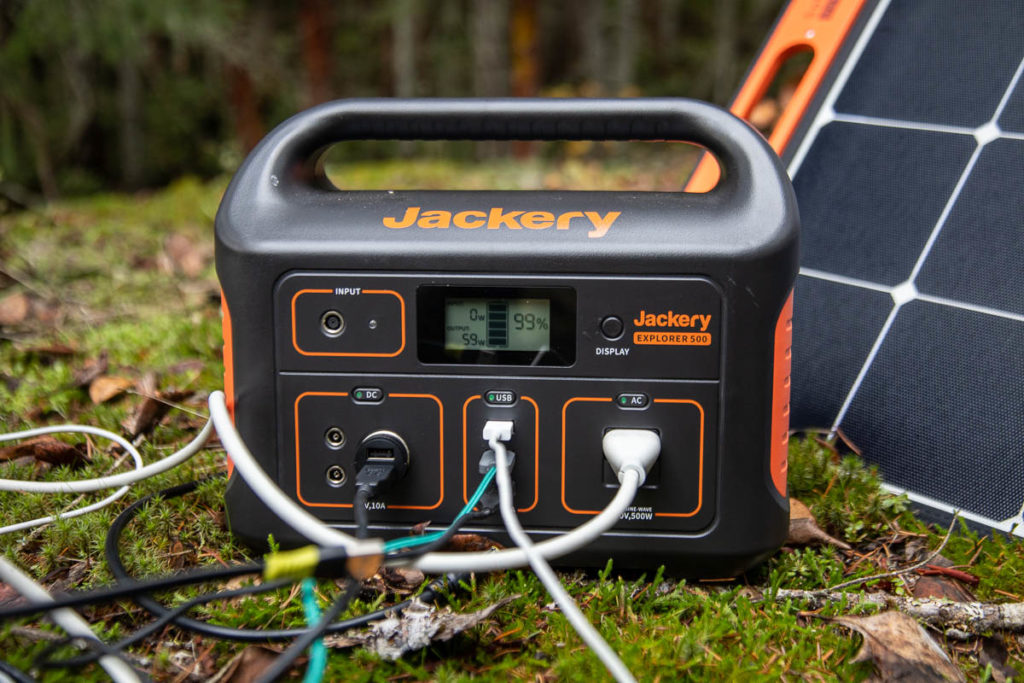Carrying 13 pounds of electricity in a backpack won’t fly but it’s great for charging all the things car camping with the family or overlanding.
Jackery know how to do batteries well and have a bunch of different sizes in durable lightweight power stations. The Jackery Explorer 500 is just one in a line of 10 different sizes of portable power stations.
With over 500 watt-hours of power and 7 different ports to charge from, it’ll keep all your devices charged up for days.
The Explorer 500 isn’t perfect but it’s close. Let’s dig into what’s awesome and what could use improvement.
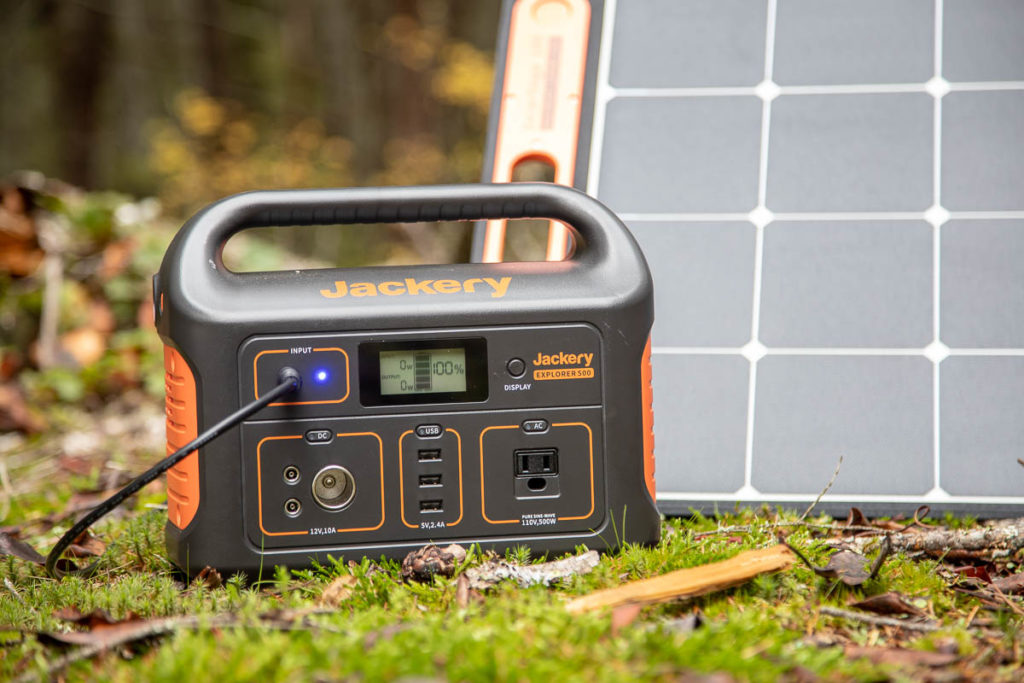
Specs
- 518 watt-hour (24Ah, 21.6V)
- built-in MPPT charge controller and Battery Management System
- 13.3 pounds
- 5.5 hours to charge
- Small flashlight on one end
- 11.8 (L) x 7.6 (W) x 9.2 (D) inches
- $499 USD
Pros
- Durable
- Easy to carry
- Easy to read screen
- Car charger included
Cons
- No USB-C ports
Ports and Outputs
The Explorer 500 has 7 output ports and one input:
- 1 AC outlet (110V, 500W continuous, 1000W surge) with pure sine wave inverter
- 3 USB-A ports
- 1 DC car port
- 2 DC ports
- 8mm DC input port (for charging)
There are a good number of ports on the Explorer 500 but I would like to definitely see a USB-C ports and maybe a second AC outlet on a power station this size. USB-C ports are becoming so popular. It’s nice to be able to charge laptops, cameras and other things that need a higher wattage without having to use the AC cable. There are car chargers available with 18 to 30 watt USB-C ports on them so if you have one of those it’s like having USB-C on the Jackery.
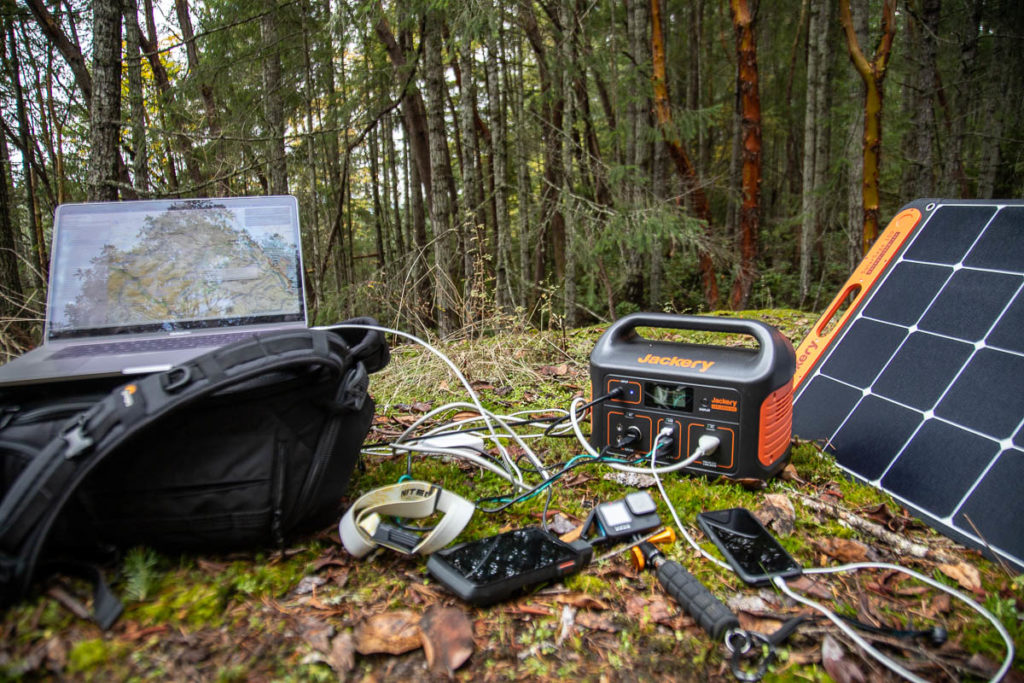
What’s in the box?
The setup in the box is simple. The battery is obviously in the case and a wall charger.
The Explorer 500 also comes with with a car charger and a small carry case that fits both the car charger and the wall charger. Some brands sell the car charger separately so this is a nice included option.
How many things can it charge?
With all the ports full, you can charge 7 things at once if you have each of the ports full. Of course you could use a small extension cord to power additional things as well or plug in other things into a computer USB hub that’s plugged in. As long as the load of all the items doesn’t exceed the 500W limit, you can plug in all sorts of things.
2 of the ports are DC ports that can be tough to find plugs or adapters for so they may not count much to the ports you use a lot. I use the USB-C constantly, the AC for bigger items and the DC on occasion if I’ve got a car adapter for something.
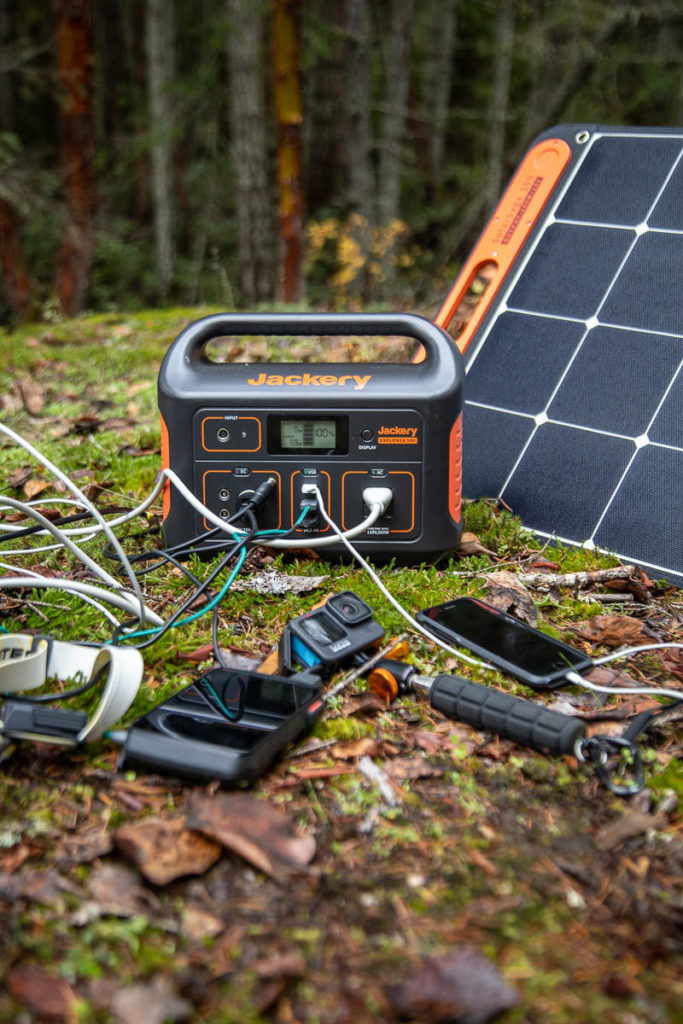
What’s the biggest thing it can charge?
The Explorer 500 can charge anything up to it’s 500 watt continuous limit. It can surge or peak up to 1000 watt but if the continuous draw is over 500 watts it may shut off.
A few examples of how long it will last for:
- 60W TV 7.5 hours
- 60W portable fridge 9 hours
- 4.5 full charges on a 13″ Macbook Pro
- 25 charges of 10W camera
- 53 charges on an iPhone 8
If you pair this with a solar panel and some decent sunlight, you could be using it every day for weeks or months to charge electronics or a portable fridge.

How fast does it charge?
The Explorer 500 charges in about 5.5 hours through the wall outlet or the included car outlet.
If it’s plugged into the SolarSaga 100 in full sunlight, you can get about 7.5 hours to charge to 80% or 9.5 hours for a full charge.
What can it be charged with?
The Explorer 500 can be charged be charged with the included wall charger or car chargers. It can can also be charged from any compatible solar panel like the Jackery SolarSaga 100.
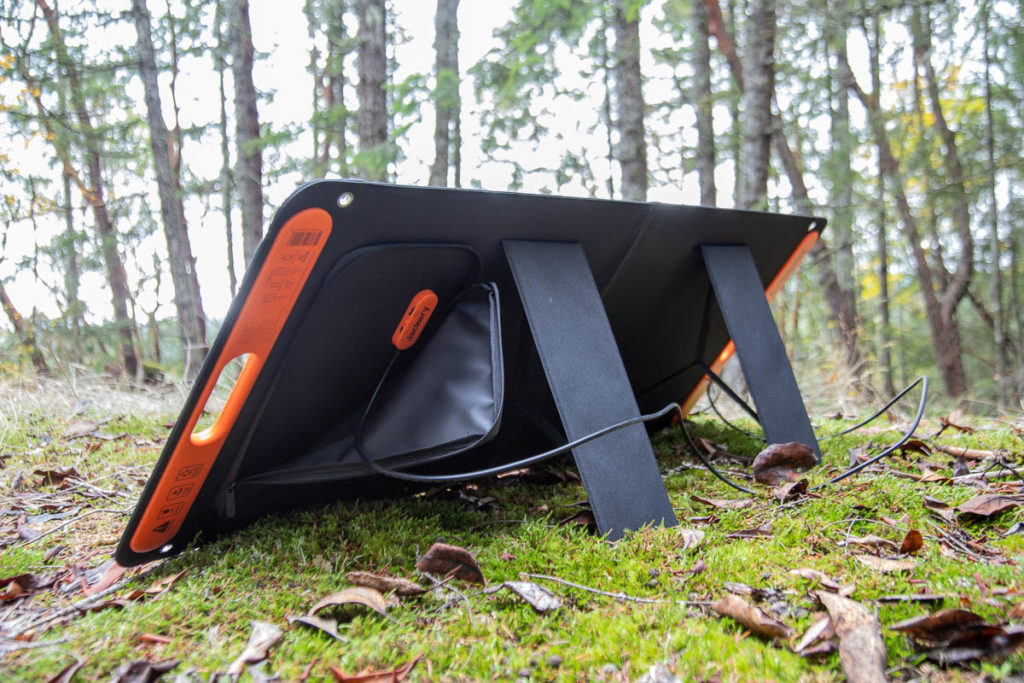
What solar panels can charge the Explorer 500?
The Jackery SolarSaga 100 solar panel is a great pair with the Explorer 500. When it’s in full sunlight it can charge the Explorer fully in about 9.5 hours with its 23% efficiency and 100 watt output. The input charging port on the Explorer 500 is a standard 8mm DC connection so any panel that connects with those will work.
The SolarSaga 60W also works for charging the Explorer 500, just a bit slower than the 100 watt.
Can you use the Explorer 500 for emergencies?
The Explorer is an excellent battery for emergencies. It’s portable and can easily be moved. It can be used for power to charge all your essential devices like radios or phones. If you have a solar panel as well, you can easily charge with the sun for as long as you’re out of power.
Jackery recommends you store it mostly charged and topping it up every 3-6 months. That works well for emergencies as you’ll have a mostly charged battery in case the power goes out or you have to get out of the house quickly.
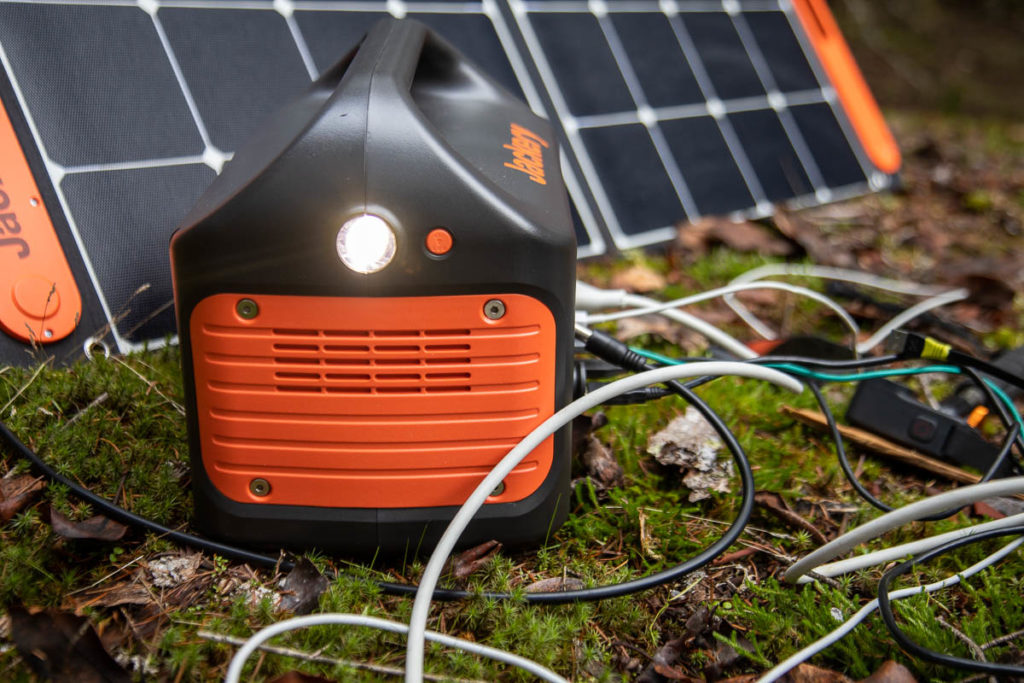
Is the Explorer 500 loud?
Electric batteries are silent most of the time. As soon as they have an AC outlet, the electronics inside need to be cooled. A small fan will come on and keep things cool. The fan isn’t loud but it’s audible. It will come on and off as things heat up. When I’m using a Macbook Pro indoors which draws about 50 watts, runs the fan on about 50% of the time.
What’s an MPPT Controller?
The Explorer 500 has a built-in MPPT controller which stands for Maximum Power Point Tracking. This regulates the voltage coming in from the panels to the battery to maximize the charge to the battery. With the older PWM controller types your solar panel voltage has to be matched with the battery voltage. With an MPPT controller, the controller handles the conversion so you can use a wider range of panels.

What’s Pure Sine Wave Inverter?
To convert the direct current (DC) from the battery to alternating current (AC) we need to charge, we need a sine wave inverter. There are 2 kinds of sine wave inverter: modified sine wave and pure sine wave. The cheaper modified sine wave inverters have a harsher wave form and don’t work with many electronics. Pure sine wave inverters are more expensive but work with all electronics so you can plug in appliances, lights and digital devices with no issues into the Explorer 500 since it has a pure sine wave inverter.
What’s a BMS?
The Explorer 500 has a BMS or Battery Management System. It keeps track of the usage and stats no the battery to make sure it’s being charged and discharged properly. It’s basically a little computer and sensors inside the battery that keeps the running well and not catching on fire.
Do we recommend the Jackery Explorer 500 Portable Power Station?
We highly recommend the Jackery Explorer 500 Portable Power Station. For its size, it’s one of the best on the market.
I’d like to see another AC outlet and USB-C ports on it if those aren’t an absolute requirement for you, then this lightweight, durable battery costs less than similar batteries with a great option for solar panels.
